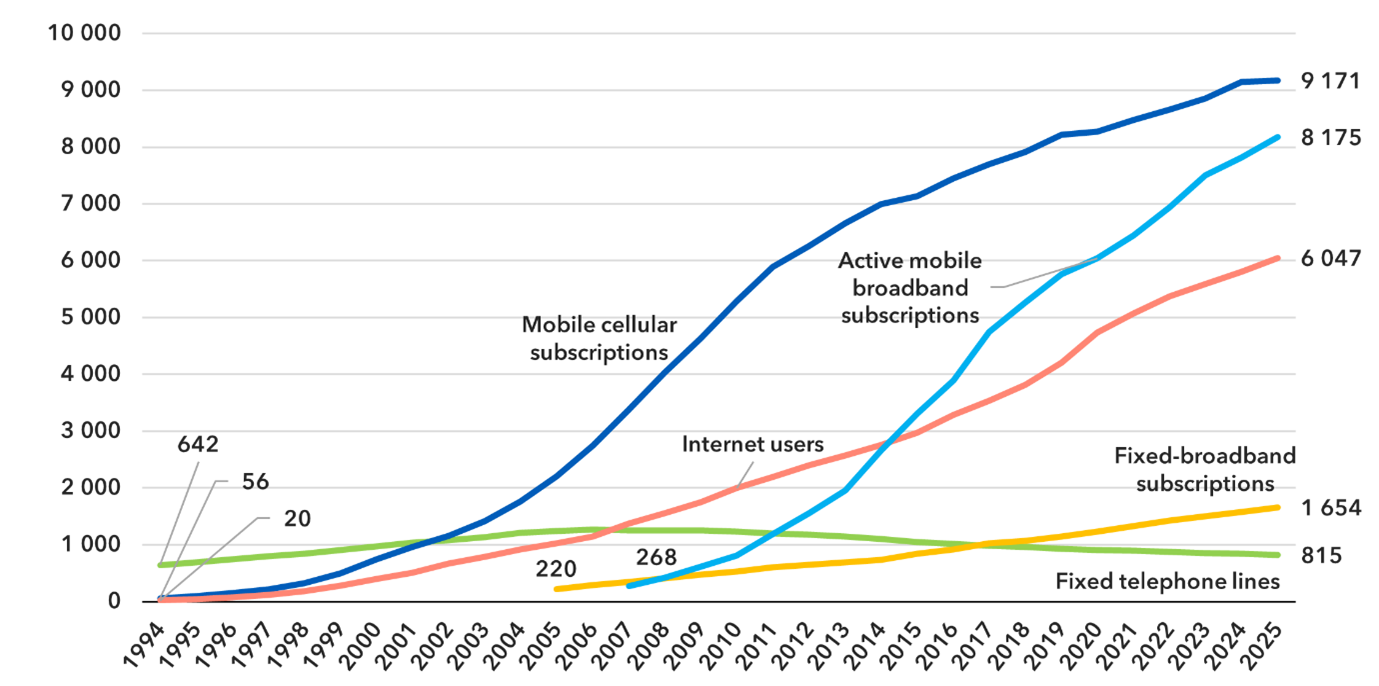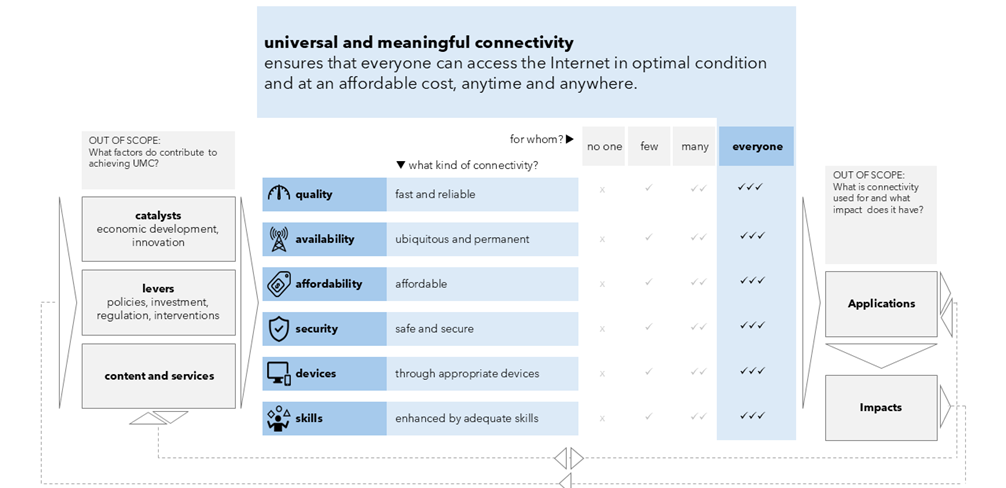Connectivity has undergone a profound transformation over the last thirty years, evolving from a scarce resource to an essential pillar of daily life. In 1994, at the time of the first World Telecommunication Development Conference (WTDC), discussions centred on expanding telephone networks, with fewer than one per cent of the global population using the Internet. By 2025, some 6 billion people are online, representing approximately three-quarters of the population.
Evolution in selected connectivity indicators (millions)

Source: ITU
This expansion has been fuelled by major technological advances, including a near 30 million-fold increase in computing power over three decades. These capabilities enabled breakthroughs in areas like artificial intelligence (AI), big data analytics, and cloud computing.
Connectivity is now a defining feature of the global economy and a major driver of human development. Empirical evidence suggests a strong link between expanding connectivity and improved socioeconomic outcomes. The digital sector has become one of the most dynamic parts of the global economy, with roughly one-third of the world’s 100 largest companies operating in information technology or communication services industries in 2025.
Despite this progress, the report highlights a connectivity paradox: while connectivity offers immense benefits, it also introduces new challenges and vulnerabilities. Unequal access, uneven quality, high costs, and limited digital skills leave billions unable to participate fully, and these digital divides often compound pre-existing “analogue” socioeconomic inequalities.
To address the limitations of simple access, the concept of universal and meaningful connectivity (UMC) has emerged as a policy imperative. UMC is defined as a situation where everyone can access the Internet in optimal conditions, affordably, whenever and wherever needed. The framework underpinning the UMC concept is built upon six interdependent enablers: quality, availability, affordability, devices, skills, and security. UMC has gained significant momentum in recent years. Through its Telecommunication Development Bureau (BDT), ITU supports UMC advancement across all dimensions, including infrastructure deployment, digital skills, policy design, data measurement, and cybersecurity.
Universal and meaningful connectivity framework

Source: ITU
The adverse effects of connectivity are increasingly evident. Unstructured or excessive use of digital tools is linked to hindering learning outcomes and adverse effects on well-being, such as increased anxiety and depression among heavy screen users. Children and youth, as the first fully digital generation, are particularly exposed to online risks. Connectivity has also amplified global risks, including the concentration of digital value, creating dependencies and widening gaps. Furthermore, it facilitates the rapid spread of misinformation and disinformation, intensifying polarization and eroding trust. The environmental costs of digitalization are substantial, too. Data centres already consume about 1.5 per cent of global electricity. The world produced 62 million tonnes of e-waste in 2022, with only 22 per cent recycled.
Despite enormous progress in connecting the world, the connectivity challenge is arguably greater than ever. Connectivity must be not only universal but also meaningful and sustainable. Ensuring that it becomes a force for good requires a holistic strategy guided by the UMC framework, supported by sustained international cooperation and reliable data.